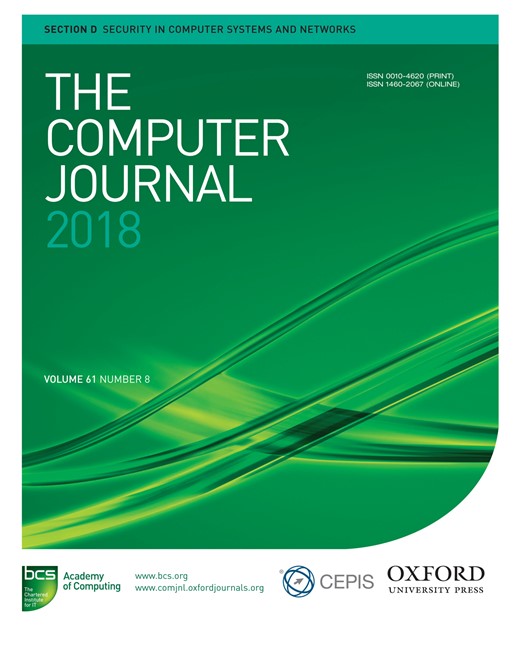-
Views
-
Cite
Cite
Baoguo Yuan, Junfeng Wang, Zhiyang Fang, Li Qi, A New Software Birthmark based on Weight Sequences of Dynamic Control Flow Graph for Plagiarism Detection, The Computer Journal, Volume 61, Issue 8, August 2018, Pages 1202–1215, https://doi.org/10.1093/comjnl/bxy055
Close - Share Icon Share
Abstract
With the large-scale development of open source software, software plagiarism has become a serious threat to software industry and intellectual property. As the latest technique of plagiarism detection, dynamic software birthmark has attracted much attention in recent years. Most of the existing dynamic birthmarks focus on how to resist obfuscation techniques such as compiler optimizations and strong obfuscations implemented in tools. However, they pay little attention to packers, especially encryption packer which is commonly used in software protection as well as plagiarism. When used to encrypt software, the decryption code is added to the binary. It is hard to distinguish the original parts of software from the decryption parts using traditional dynamic birthmarks. In this paper, we propose a new dynamic software birthmark called weight sequences birthmark (WSB) which is based on weight sequences of dynamic control flow graph (DCFG). The weight sequences are used as characteristics, which make full use of the different patterns of dynamic basic block replications between the original code and the decryption code. Compared with the-state-of-art dynamic key instruction sequence birthmark (DKISB), the new birthmark can resist encryption packer effectively. Furthermore, WSB shows better credibility than DKISB when distinguishing independent programs. The comprehensive experiments illustrate that the value of extended F-measure can reach 96.8%, indicating that it is a high-quality birthmark which satisfies both the credibility and the resiliency.




